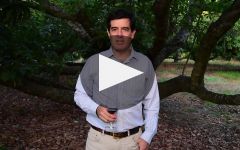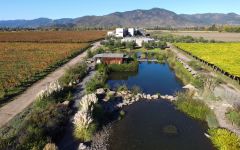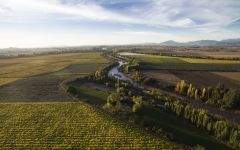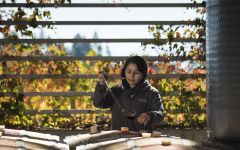Maquis Rose 2012


Product Details
Your Rating
Somm Note
Winemaker Notes









The Hurtado family has owned the Viña Maquis vineyard for more than a century, but it wasn’t until almost 20 years ago that the family decided to make their own wine out of the terrific grapes in their own backyard. They built a state-of-the-art gravity flow winery and set out to make the Maquis winery one of the great properties in all of South America.
Located in Colchagua Valley, the winery’s focus is on distinctive single-vineyard, estate wines, as well as producing “balanced” wines that are not over-ripe (resulting in excessively high alcohol) but also not exhibiting any of the “green” character that sometimes plagues wines picked from grapes that have not fully matured. The Maquis main vineyard is essentially an island: it is deeply influenced by the Tinguiririca River on one side and the Chimbarongo Creek on the other. These two large waterways once brought alluvial sediment from the Andes and today act as pathways for cool coastal breezes that help moderate the warm Colchagua summers, contributing to the intensity, character, fruitiness and mineral elements of the Maquis wines. Maquis is fortunate to have such a privileged location.

Whether it’s playful and fun or savory and serious, most rosé today is not your grandmother’s White Zinfandel, though that category remains strong. Pink wine has recently become quite trendy, and this time around it’s commonly quite dry. Since the pigment in red wines comes from keeping fermenting juice in contact with the grape skins for an extended period, it follows that a pink wine can be made using just a brief period of skin contact—usually just a couple of days. The resulting color depends on grape variety and winemaking style, ranging from pale salmon to deep magenta.

Dramatic geographic and climatic changes from west to east make Chile an exciting frontier for wines of all styles. Chile’s entire western border is Pacific coastline, its center is composed of warm valleys and on its eastern border, are the soaring Andes Mountains.
Chile’s central valleys, sheltered by the costal ranges, and in some parts climbing the eastern slopes of the Andes, remain relatively warm and dry. The conditions are ideal for producing concentrated, full-bodied, aromatic reds rich in black and red fruits. The eponymous Aconcagua Valley—hot and dry—is home to intense red wines made from Cabernet Sauvignon, Syrah and Merlot.
The Maipo, Rapel, Curicó and Maule Valleys specialize in Cabernet and Bordeaux Blends as well as Carmenère, Chile’s unofficial signature grape.
Chilly breezes from the Antarctic Humboldt Current allow the coastal regions of Casablanca Valley and San Antonio Valley to focus on the cool climate loving varieties, Pinot Noir, Chardonnay and Sauvignon Blanc.
Chile’s Coquimbo region in the far north, containing the Elqui and Limari Valleys, historically focused solely on Pisco production. But here the minimal rainfall, intense sunlight and chilly ocean breezes allow success with Chardonnay and Pinot Noir. The up-and-coming southern regions of Bio Bio and Itata in the south make excellent Riesling, Chardonnay and Pinot Noir.
Spanish settlers, Juan Jufre and Diego Garcia de Cáceres, most likely brought Vitis vinifera (Europe’s wine producing vine species) to the Central Valley of Chile sometime in the 1550s. One fun fact about Chile is that its natural geographical borders have allowed it to avoid phylloxera and as a result, vines are often planted on their own rootstock rather than grafted.
